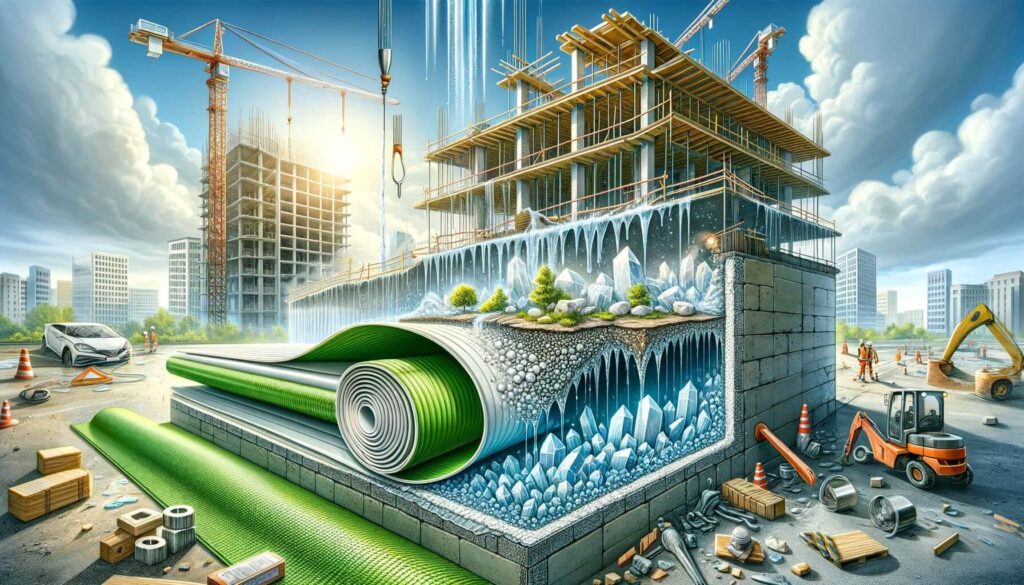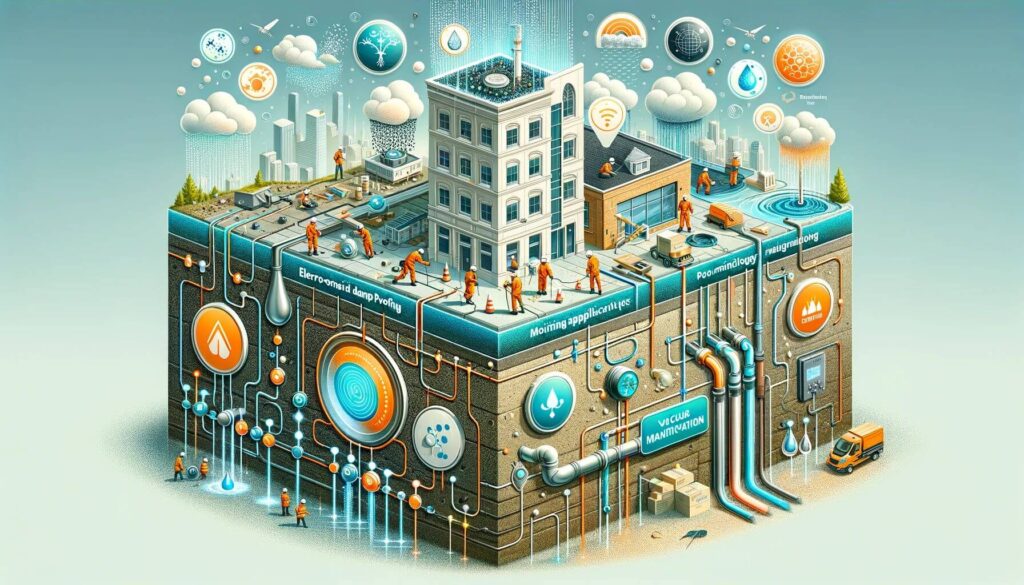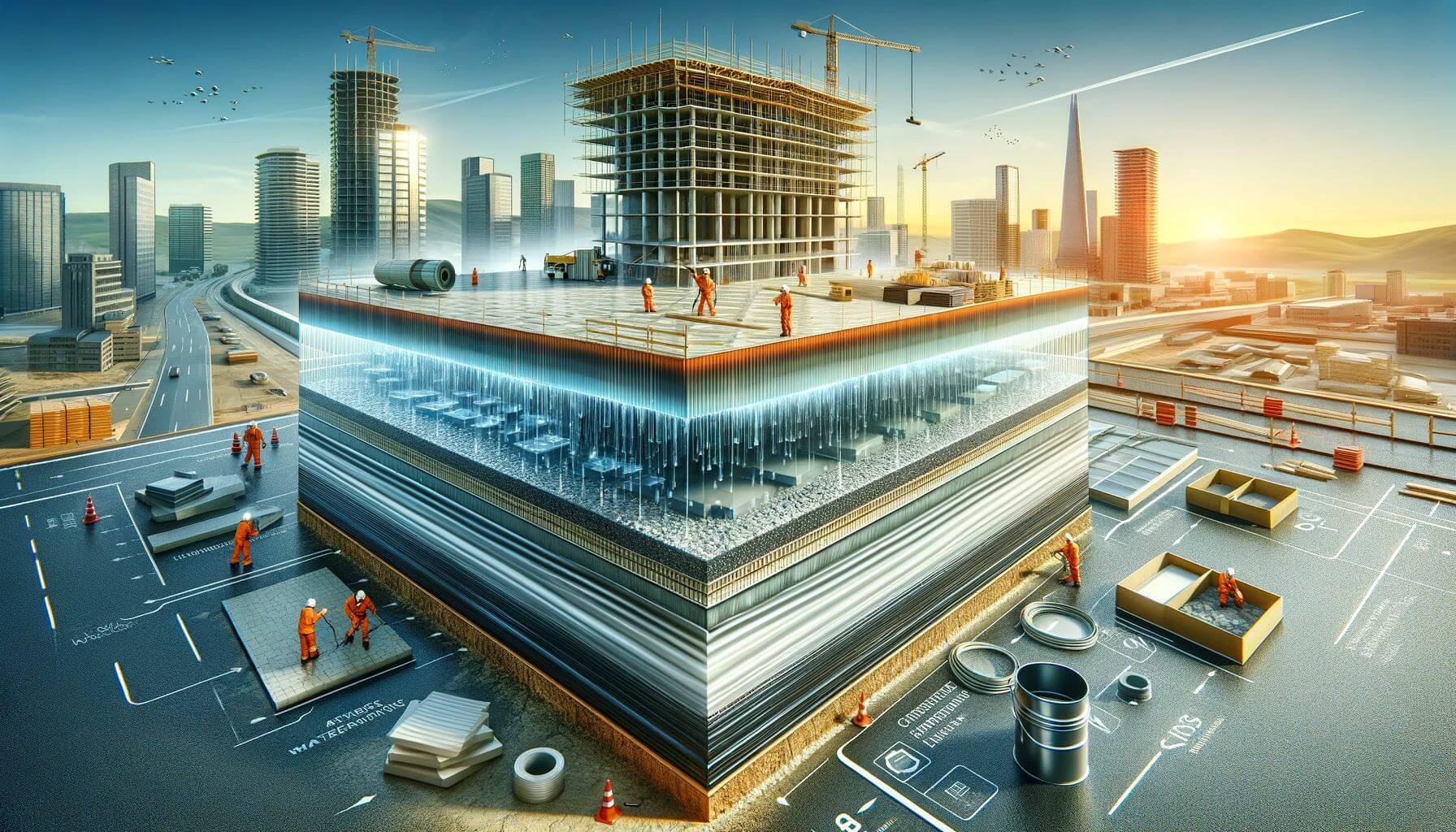In the construction world, safeguarding structures against moisture stands paramount. Damp proofing, the guardian against moisture ingress, ensures the longevity and integrity of buildings. From the foundational beams to the rooftop shingles, the battle against damp is ongoing. Yet, as we progress through time, the strategies and techniques evolve.
Gone are the days of merely slapping on a coat of tar. Today, we’re witnessing an era of advancement in damp proofing techniques. It’s not just about blocking moisture; it’s about smart, sustainable solutions that adapt and resist. In this innovative landscape, materials think, and systems react.
Our exploration ventures beyond conventional methods. We will go into the world of advanced techniques and cutting-edge technologies, aiming for unparalleled moisture protection.
The mean reason is to arm buildings against the relentless encroachment of dampness with tools more refined than ever before. Let’s navigate through the latest innovation in damp proofing foundations.
Advanced Damp Proofing Materials

In the frontier of construction technologies, materials engineered to combat damp are revolutionizing how we protect our structures. These advancements bring not just defense but resilience, transforming the way buildings stand against moisture.
Crystalline Waterproofing Technology
At the heart of this evolution lies Crystalline Waterproofing Technology (CWT)—a solution that does more than just cover up the problem. It tackles moisture head-on, at its source, turning weaknesses into strengths.
Description and Mechanism of Action
Crystalline waterproofing works its magic through a process that feels almost alive. When applied to concrete, its active ingredients react with water and free lime, creating a lattice of insoluble crystals.
These crystals grow deep within the concrete, filling pores, capillaries, and micro-cracks, effectively making the concrete itself waterproof. The beauty of this technology lies in its ability to reactivate in the presence of water, ensuring long-term protection that’s as dynamic as the environments we build in.
Benefits and Ideal Use Cases
The advantages of CWT stretch far and wide. It offers a permanent solution to water ingress, with the capability to self-seal new cracks that may develop over time. This proactive approach to damp proofing is not only efficient but also cost-effective, minimizing the need for repairs and maintenance.
Ideal use cases for CWT span across a broad spectrum of construction projects. From the foundations of skyscrapers to the basements of homes, anywhere concrete is used, CWT can offer its protective shield.
It’s particularly beneficial in scenarios where water pressure is a concern, such as underground structures, water treatment plants, and areas prone to flooding. With Crystalline Waterproofing Technology, buildings aren’t just built to last; they’re built to resist.
Flexible Membrane Laminates
As we know more about the realm of advanced damp proofing materials, Flexible Membrane Laminates (FML) emerge as a formidable ally. This cutting-edge solution brings elasticity and resilience to the forefront of moisture protection.
Overview of Materials and Properties
Flexible Membrane Laminates are a symphony of high-performance materials engineered to work in unison. They consist of layers that include a water-resistant barrier, a tough, durable fabric for strength, and a flexible polymer that allows the membrane to move with the building.
This flexibility is critical in accommodating natural movements and settlements of structures without compromising the waterproof seal. The result is a membrane that not only shields against water but also bridges cracks and gaps that may form over time.
Comparison with Traditional Membranes
When pitted against traditional waterproofing membranes, FMLs stand out for their adaptability and durability. Traditional methods often rely on rigid materials that can crack or break under stress, leading to potential points of failure in the waterproofing system. In contrast, FMLs embrace the dynamic nature of buildings, ensuring a continuous, unbroken barrier against moisture.
Furthermore, traditional membranes may degrade under UV exposure or fluctuating temperatures, whereas FMLs are designed to withstand environmental challenges, ensuring longevity and reducing the need for frequent replacements or repairs.
The use of Flexible Membrane Laminates signifies a step forward in damp proofing technologies. By integrating elasticity with durability, FMLs offer a robust solution that anticipates and adapts to the needs of modern structures, providing a level of protection that traditional methods can hardly match. With FMLs, buildings are not just covered; they are cloaked in a waterproof armor that moves, breathes, and protects against the relentless challenge of moisture.
Eco-Friendly Waterproofing Solutions
As the construction industry pivots towards sustainability, the adoption of eco-friendly waterproofing solutions marks a significant stride in this direction. These innovative materials not only offer effective moisture protection but also align with the global push for environmental stewardship.
Introduction to Sustainable Materials
Eco-friendly waterproofing materials are derived from sustainable sources and are designed to minimize environmental impact. These solutions include water-based polymers, recycled rubber products, and bio-based membranes, which are not only less harmful to the ecosystem but also reduce the carbon footprint associated with building construction and maintenance.
Unlike their conventional counterparts, which often contain volatile organic compounds (VOCs) and toxic chemicals, sustainable waterproofing materials are non-toxic, low in VOCs, and often fully recyclable at the end of their life cycle.
Impact on Environmental Sustainability and Effectiveness
The impact of using sustainable waterproofing solutions extends beyond their immediate environmental benefits. By incorporating materials that are as effective as they are eco-conscious, these technologies ensure long-term durability and water resistance without sacrificing performance.
They offer a resilient barrier against moisture ingress, comparable to traditional waterproofing methods, but with the added advantage of being kinder to our planet.
Moreover, the use of eco-friendly waterproofing materials can contribute to a building’s eligibility for green certifications, such as LEED (Leadership in Energy and Environmental Design), enhancing its market value and appeal. This alignment with green building standards not only reflects a commitment to environmental responsibility but also sets a precedent for future construction practices.
In essence, eco-friendly waterproofing solutions embody the harmonious balance between safeguarding our structures and protecting our environment.
They stand as a testament to the fact that effective damp proofing need not come at the expense of the earth’s wellbeing. Through the adoption of sustainable materials, the construction industry can contribute to a more sustainable future, one foundation at a time.
Innovative Application Techniques of Damp Proofing Foundations

The journey towards advanced moisture protection leads us to explore not just materials, but also revolutionary application techniques. These methods redefine the boundaries of what’s possible, offering smarter, more effective ways to keep dampness at bay.
Electro-Osmotic Damp Proofing
In the realm of innovation, Electro-Osmotic Damp Proofing (EODP) stands out as a forward-thinking solution. This technique harnesses the power of electricity to repel water, a novel approach that brings science and technology together to fight moisture.
Explanation of the Electro-Osmotic Process
The electro-osmotic process involves the installation of a low-voltage electric field across the damp areas of a structure. By applying this field, water molecules, which naturally carry a charge, are influenced to move away from the building’s walls, effectively drying out the affected areas. This method turns the tide against dampness, using an invisible force to achieve visible results.
Advantages and Limitations
EODP shines in its ability to address dampness in challenging scenarios, such as historical buildings or structures where traditional methods are impractical. It offers a non-invasive, chemical-free solution, preserving the integrity of the building while protecting it from moisture.
However, the effectiveness of EODP can vary depending on the building’s construction materials and the extent of dampness. Additionally, the initial setup requires specialized knowledge and equipment, and there’s an ongoing energy cost, albeit minimal, associated with maintaining the electric field.
Pore Blocking with Nano-Technology
Advancing further into the microscopic world, Pore Blocking with Nano-Technology emerges as a game-changer in damp proofing. This approach leverages the precision and efficiency of nanoscale materials to create an impenetrable barrier against water.
Description of Nano-Technology in Damp Proofing
Nano-technology introduces particles so small, they work on a molecular level to block the pathways through which water might infiltrate a structure. When applied to surfaces, these nanoparticles fill and seal pores, cracks, and micro-voids in concrete and other building materials, preventing water from passing through.
Practical Applications and Effectiveness
The effectiveness of nano-technology in damp proofing is profound. It offers a level of protection that is both comprehensive and enduring, capable of safeguarding a wide range of structures, from residential homes to industrial facilities. This method is particularly useful in environments exposed to harsh weather conditions or where water pressure is a constant challenge.
Moreover, the application of nano-technology is straightforward and non-intrusive, requiring no significant alterations to existing structures. It represents a leap forward in our ability to protect buildings from the inside out, ensuring they remain dry, durable, and free from the threats posed by moisture ingress.
As we embrace these innovative application techniques, the future of damp proofing looks brighter than ever. With Electro-Osmotic Damp Proofing and Nano-Technology leading the charge, we’re not just fighting dampness; we’re outsmarting it, ensuring our buildings stand resilient in the face of moisture’s persistent challenge.
Vacuum Drainage Systems
Venturing into the realm of advanced moisture management, Vacuum Drainage Systems (VDS) emerge as a potent force against water intrusion. This technique represents a proactive approach, effectively mitigating the risk of dampness before it reaches the foundation.
Concept and Implementation
The concept behind Vacuum Drainage Systems is ingeniously simple yet profoundly effective. By creating a vacuum, or negative pressure, in strategically placed drainage pipes around a building’s foundation, water is actively drawn away from the structure. This preemptive extraction of water ensures that moisture does not accumulate near the foundation, where it could potentially seep through and cause damp issues.
Implementing a VDS involves the installation of perforated pipes, wrapped in a geotextile filter to prevent clogging with soil, around the building’s perimeter. These pipes are connected to a vacuum pump system, which maintains the necessary negative pressure to draw water away efficiently.
Suitability and Efficiency in Different Soil Conditions
The efficiency of Vacuum Drainage Systems can vary across different soil types. In soils with higher permeability, such as sandy or gravelly soils, VDS operates with remarkable efficiency, rapidly diverting water away from the structure. In contrast, clay-heavy soils, known for their lower permeability, may pose a challenge, requiring adjustments in the system’s design or additional measures to enhance its effectiveness.
Nevertheless, the adaptability of VDS allows for tailored solutions that can be optimized for a wide range of environmental conditions, making it a versatile tool in the arsenal against dampness.
Monitoring and Maintenance

As we harness the power of advanced materials and innovative application techniques, the significance of continuous monitoring and diligent maintenance in damp proofing cannot be overstated. These practices are crucial for the longevity and effectiveness of damp proofing systems.
Moisture Monitoring Systems of Damp Proofing Foundations
In the age of smart technology, Moisture Monitoring Systems (MMS) play a pivotal role in the preventive strategy against dampness. These systems offer real-time insights into moisture levels, enabling proactive measures to mitigate potential issues.
Preventive Damp Proofing foundations Strategies
Moisture Monitoring Systems act as an early warning system, identifying areas of excess moisture before they escalate into more serious damp problems. By continuously assessing moisture levels, MMS allows for timely interventions, whether it’s activating drainage systems, adjusting humidity controls, or identifying the need for repairs.
Types of Sensors and Integration with Smart Systems
Modern MMS incorporate a variety of sensors, including capacitive, resistive, and relative humidity sensors, each designed to accurately measure moisture content in different materials and environments. These sensors can be integrated into smart building systems, enabling automated responses to moisture levels, such as activating dehumidifiers or alerting maintenance teams.
The integration of MMS into building management systems represents a leap towards more resilient and intelligent structures. It not only enhances the efficacy of damp proofing measures but also contributes to the overall health and sustainability of the built environment. With these technologies at our disposal, the battle against dampness shifts from reactive to proactive, ensuring our buildings remain safe, dry, and durable for years to come.
Regular Inspections and Maintenance
The linchpin of a successful damp proofing strategy lies not only in the selection of advanced materials and techniques but also in the commitment to regular inspections and maintenance. This vigilance is crucial for the enduring efficacy of damp proofing solutions.
Importance of Ongoing Assessment
Regular inspections serve as the backbone of preventive maintenance, allowing for the early detection of potential issues before they escalate into costly repairs. Ongoing assessment ensures that the damp proofing measures continue to perform at their optimum, safeguarding the structure against moisture ingress over its lifespan.
Schedule and Procedures for Effective Maintenance
A structured schedule for inspections and maintenance is essential. It is advisable to conduct thorough checks at least once a year, with additional assessments following extreme weather events. These inspections should cover all components of the damp proofing system, including membranes, drainage systems, sealants, and areas prone to water accumulation.
Effective maintenance procedures may involve cleaning drainage systems, resealing joints, repairing any damages to waterproof membranes, and ensuring that moisture barriers remain intact. For systems like electro-osmotic damp proofing or vacuum drainage, verifying operational efficiency and making necessary adjustments is key.
Solutions on Damp Proofing Foundations
The journey through advanced damp proofing techniques underscores the critical role these measures play in preserving the structural integrity and longevity of buildings. As we’ve explored, transitioning from traditional methods to more sophisticated solutions offers a pathway to superior moisture protection.
Adopting innovative solutions is more than a choice; it’s a commitment to safeguarding our built environment against the relentless challenge of dampness. These advanced techniques, while sometimes requiring a greater initial investment, provide long-term savings and peace of mind through enhanced durability and reduced maintenance costs.
Balancing cost, effectiveness, and environmental impact is paramount. Today’s advanced damp proofing solutions offer a way to achieve this balance, delivering high-performance moisture protection while adhering to sustainable building practices. As we look to the future, the integration of these innovative techniques into standard construction practices is not just advisable but essential for building resilience in the face of environmental challenges.
FAQs on Damp Proofing Foundations
Q1: What are the unique benefits of crystalline waterproofing?
- Crystalline waterproofing provides a permanent, self-sealing solution that actively blocks water ingress through micro-cracks, even as new ones form.
Q2: How does electro-osmotic damp proofing work?
- It utilizes a low-voltage electric field to repel moisture away from the structure, effectively reducing dampness in walls.
Q3: Are eco-friendly solutions as effective as traditional methods?
- Yes, modern eco-friendly solutions offer comparable effectiveness, with the added benefits of sustainability and lower environmental impact.
Q4: Can advanced damp proofing methods be applied to any building?
- While adaptable, the suitability of advanced methods may vary based on the building’s age, design, and existing moisture levels. A professional evaluation is recommended.
Q5: What are the challenges in implementing advanced techniques?
- Challenges include higher initial costs, the need for specialized knowledge for installation, and ensuring compatibility with existing structures.


Leave a Reply